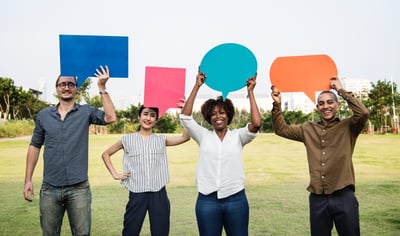June 12, 2020
 by Natalka Antoniuk / June 12, 2020
by Natalka Antoniuk / June 12, 2020

The economy started with commodities.
People would barter over fresh food at the market. Then the entrepreneurs of our world saw the opportunities available and began selling goods. Fresh market produce became processed food, providing consumers with a quick and easy solution. It wasn’t long before the businesses minded picked up on our want for ease and speed.
It will come as no surprise to learn that the first pizza delivery took place near Naples in Italy, way back in 1889. This was when, as a worldwide population, we began seeking services that provided an even more convenient way of accessing commodities.
Things have moved on since the 19th century. Still using food as an example, there has been a huge rise in demand for delivery services. Companies such as Deliveroo, Uber Eats, and JustEat have based their entire business model on this fact, providing a digital solution and making these services even more accessible. And that’s when it happened.
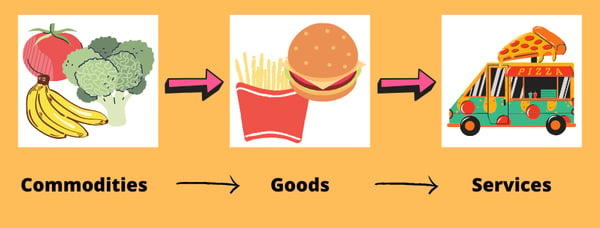
Everyone needs commodities. But not everyone was prepared to wait for them. For over 100 years businesses have evolved to provide these commodities with a quick, easy service. So much so that we are nearing the end of the consumerism culture.
People didn’t just want things anymore. They were spending more money on services than they were on stuff. And that’s when we saw the progression of economic value shift to its current phase, known as staged experiences. Brands had to try harder to give their customers a memorable experience.
The reason for this shift was because individuals began to value experiences over material goods. The experience economy wasn’t born out of our desire for excitement. It was simply our longing for more time, more memories and an easier life. The experience economy derived from The American Dream.
The first mention of the term experience economy was in the Harvard Business Review in 1998. They used a birthday cake to explain the progression of economic value. First people would buy ingredients to bake a birthday cake. Then they would buy a box of premixed ingredients. Once the service economy became popular they would spend up to ten times as much ordering a freshly baked cake. And now they spend even more on an experience, a birthday party at a venue who will often include a cake as part of the package.
When discussing the experience economy, experiences come under their own category just like a commodity or a service. They are sold by emphasizing the effect that they can have on people’s lives. The experience economy is quite literally an economy in which goods and services are combined and sold to create a memorable experience.
It has crept up on us. Well, on some of us. According to a study by EventBrite, as many as 75% of millennials say that they value experiences over things. And it’s absolutely no surprise when you look at the scientific evidence pointing us to what makes us happy.
After decades of luxury brands advertising expensive products to create a materialistic consumerist society, we are being told that in order to be happy it is not so much about what we own but about what we do and how we do it. Events are memorable. They play a role in shaping how we view ourselves and the world. Possessions simply can’t do that.
As social media use has risen, so has the desire for experience. The experience economy and social media go hand in hand. Social media gives you a glimpse into other people’s lives. You judge them on what they are showing you, which is generally snapshots of events and experiences.
You see images of live music events, meals out, cocktail bars, beaches, bike rides and every other experience you can think of. You make judgements on who that person is. You aspire to be like that person. You want to create those memories for yourself.
Social media is definitely what surged the experience economy. Forty-nine percent of millennials say that they attend events so that they have something to share on social media.
We’ve touched on the idea of staged experiences. Purposefully combining a group of goods and services to provide the consumer with memorable experiences. Brands that are doing this effectively are seeing more customer interaction, increasing brand awareness and demand for what they are offering sky rocket.
Just look at the rise in demand for subscription boxes. Over half of 25-34 year olds are signed up to a subscription service of some kind. The subscription service industry is forecast to be worth £1 billion by 2022. People are making monthly payments to a company to receive a box of unknown goods. Why? The anticipation, joy, frustration and excitement of receiving a mystery package. The overall experience.
So what has social media got to do with all this? Brands are thriving in the experience economy without social media – or is it social media that got them there in the first place? We already know that almost half of millennials aim to create social media content at a live event. Well what if that was your brand's live event? By creating the right experience for your customers you could be increasing your online mentions, social shares and customer interactions dramatically.
You don’t need to host a huge live event to get this kind of interaction. Look at Starbucks as an example. Something as simple as writing an individual’s name onto their cup led to thousands of social shares. As this grew, Starbucks developed their product range into an Instagram friendly variety of concoctions. Pink drinks and unicorn Frappuccinos were being hash tagged every day. Starbucks essentially looked at the experience they offered, getting a coffee, and adapted it to encourage social shares.
This example shows exactly how the economy of experience has benefitted from social media use. Starbucks turned a commodity (coffee beans) into goods (coffee) into a service (takeaway coffee and food) until finally, turning each of their worldwide stores into a theatre of baristas, coffee grinders, pink drinks and milk steam. Getting a coffee is an experience. And that experience has 124.7 million posts on Instagram.
Obviously, Starbucks is a giant global brand. But all they had to do to kick-start this success was write the customer’s name on their cup. This doesn’t cost money or time in the grand scheme of things, and there is no reason that your business can’t capitalise on the experience economy and start building memorable experiences for your brand.
Creating experiences is not a new concept. For years theme parks, cinemas, music venues and the likes have capitalised on our desire to create lasting memories. It just so happens that brands are learning how to do it, too.
Experiential marketing is on the rise and brands are tapping into the experience economy. Business owners are experimenting with a number of ideas from cat café’s and secret menus to entertaining retail displays that plunge customers into other worldly experiences.
Live events have proven successful when it comes to experiential marketing. Global brands are sponsoring festivals, sporting events and venues. Some businesses, such as LUSH Cosmetics, host their own annual events to showcase new products to hundreds of customers. Trade shows have proven to be a fantastic opportunity for companies operating in both the B2B and B2C sectors, as all businesses are invited to create a pop-up environment to engage new audiences.
By now you’re probably in agreement that this is something your business should be doing whether you have space to provide experiences or not. If you want to build a stronger customer base and make more money then you really don’t have much of an option. Here are some ideas to help you build memorable experiences for your audience:
This is one of the easiest ways to get noticed. Give people a reason to interact with you and make sure they remember it. Pop up shops and trade shows are great places to host interactive games and competitions that get teams working together, creating memories and winning prizes.
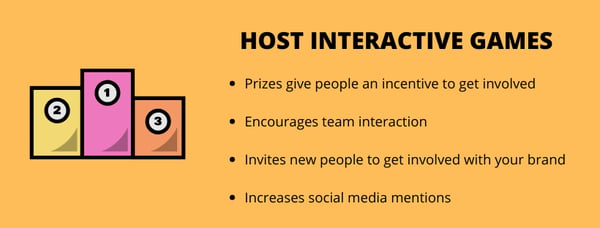
Why wouldn’t someone wander over to see what is going on? You can encourage social shares by running a photo competition. If the prize is good enough people will be eager to get involved, it’s down to you to make sure that they remember the experience.
If this article has taught you anything, it’s that you don’t need a lot of money to capitalise on the experience economy. Photo opportunities encourage people to interact with your brand just as much as games or competitions do.
You can create photo opportunities with:
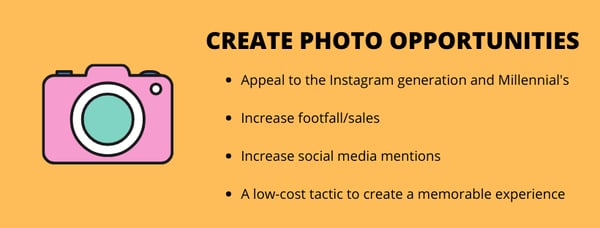
Why do these photo opportunities work? People want to spend their money on experiences, not things. But they still want people to know how exciting their life is, hence the social media sharing. Nobody wants to share a photo of a fried breakfast from their local greasy spoon, so they opt for photo worthy experiences. If you’re offering one of those then you’ve got access to a huge millennial audience.
The most successful experiences offered by brands have had an element of surprise. Whether they’ve popped out of nowhere like this barber shop experience by Gillette or are hidden in plain sight like Samsung’s secret menus, people clearly enjoy experiences that they aren’t expecting.
It’s even better if you can turn this secretive element into the experience. There are hidden entrances to cocktail bars all over London. This unique opportunity attracts visitors from all over the UK as well as international tourists. Not a surprise as such (because Google will tell you where to find them) but definitely an opportunity to turn your everyday business into a new experience.
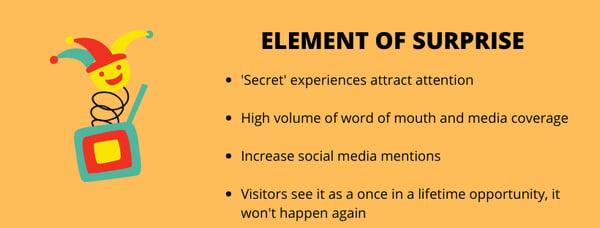
With all of this to think about it’s easy to get carried away. As long as you are thinking about it rationally then you should have no problem planning a memorable experience for your customers. Here are some brands that are already taking advantage of this.
These four brands each took the challenges of the experience economy and turned them into opportunities. In these examples you will see businesses who have used the experience economy to boost sales, build relationships or even based their business model on the concept entirely.
Hard Rock Café is one of many restaurants that have decided to offer their customers more than just a dining experience. In fact, food is a secondary thought when you’re in there. The music themed restaurants are home to some of the most elusive rock and roll memorabilia such as autographed guitars and rare photographs. People don’t just visit the Hard Rock Café for a burger, the go for the experience.
Fortnite is an online game released in 2017 by Epic Games. Since then, it has grown in popularity and now has 350 million monthly players according to Statista. They decided a virtual experience wasn’t enough for their audience and decided to bring the game to life at Paris Games Week 2018.
The exhibition stand was a real life Fortnite scene that allowed people to interact with characters, take part in mini-games and pose for photographs. Over 30,000 social media mentions were generated off the back of the one week event.
Airbnb digitized sofa surfing, and did a very good job of it. They saw an opportunity within the sharing economy, and ended up changing corporate travel forever. They are now realising the opportunities available within the experience economy.
As well as hosting guests and renting your property, you can now host experiences. These can be physical experiences such as guided tours or cheese tastings, or digital experiences like cooking classes or coffee masterclasses.
What’s better than getting the chance to win a million pounds with your Big Mac? McDonald’s has announced a 5% increase in third quarter profits after another successful Monopoly promotion. McDonald’s customers find Monopoly board stickers with their meals and have the opportunity to win prizes by collecting a group of properties. This is not an experience to miss according to the social media buzz that it generates.
People don’t want to buy things anymore. If you want them to use your brand then you need to offer them an experience. It’s become clear, thanks to social media, that happiness comes from experiences and memories rather than material things.
To build lasting relationships with your customer, you need to offer them more than goods and services. Live events and experiential marketing campaigns have been successful in raising brand awareness and increasing profits but you don’t need a huge budget to pull off a stunt this big.
Something as simple as hosting a game on your exhibition stand or turning your shop into an Instagram photo opportunity are low cost experiences with proven effective results. Don’t let this opportunity pass you by. Join the experience economy today.
Natalka Antoniuk is a full time content writer for leading exhibition stand design agency, Quadrant2Design. Her passion for content, SEO optimization, and writing developed following her personal blog's growth, and inspired her to pursue a career in content.
Communication is the most basic thing we learn as human beings.
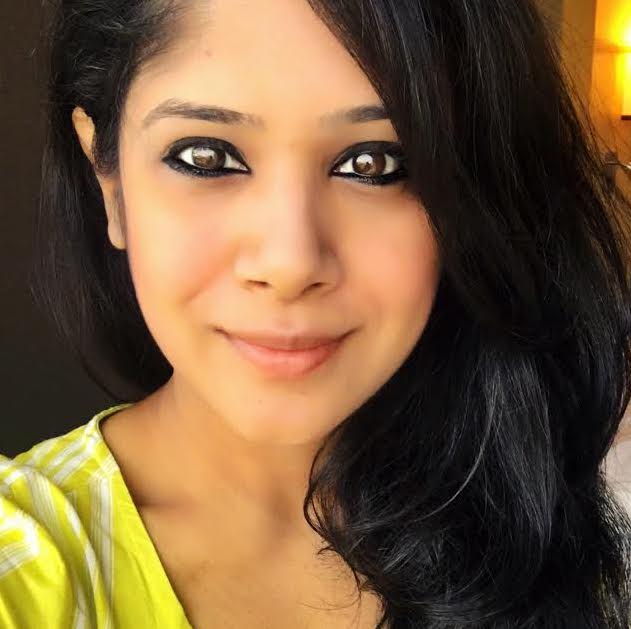 by Nanditha Vijayaraghavan
by Nanditha Vijayaraghavan
Have you ever had an experience with a brand that completely wowed you? So much so that you...
 by Hannah Tow
by Hannah Tow
Marketing, as always, is constantly evolving.
 by Vyshnavi Basuthkar
by Vyshnavi Basuthkar
Communication is the most basic thing we learn as human beings.
 by Nanditha Vijayaraghavan
by Nanditha Vijayaraghavan
Have you ever had an experience with a brand that completely wowed you? So much so that you...
 by Hannah Tow
by Hannah Tow
